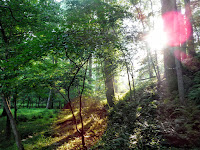Thailand
KhaoLak is a small beach town north of PhuKet. Pretty laid back with plenty of places to eat and a variety of lodgings. These range from full service resorts on the beach to small locally owned spots. There are also many adventure tours, fishing, food and shopping options.
 I flew Korean Air due to their service and checked luggage policy. Transfer in Seoul and then to PhuKet. Then a shuttle to KhaoLak. I chose Banana Bungalows to stay as its a thai owned small business and well located. Not 5 star but well priced and with a pool and motorbike rental. They can also arrange tours at very reasonable rates.
I flew Korean Air due to their service and checked luggage policy. Transfer in Seoul and then to PhuKet. Then a shuttle to KhaoLak. I chose Banana Bungalows to stay as its a thai owned small business and well located. Not 5 star but well priced and with a pool and motorbike rental. They can also arrange tours at very reasonable rates. I search Travelfish.org for info about asia. This is how I found Banana Bungalow, places to visit and things to do. I couldnt arrange my trip until april which is near the end of the season there. The monsoon season starts may 15. My last day was may 8, so I was cutting it close.
I search Travelfish.org for info about asia. This is how I found Banana Bungalow, places to visit and things to do. I couldnt arrange my trip until april which is near the end of the season there. The monsoon season starts may 15. My last day was may 8, so I was cutting it close.  One big reason for the trip was to do some fishing. I caught the very tail end of it. Finding a charter boat was tough being the end of the season. A local bartender told me to go to Thap Lamu pier and ask for Ms Chen. Long story short, I found her and one of her sons took me out the next day. We had to go out 7 miles but he put me on fish. Permit and Dorado. We went out on a traditional thai boat...passed the Buddha the fishermen pray to on the way out and had a great day. And the locals are much cheaper than big company boats..$75 with lunch! Wish I found them sooner in the trip.
One big reason for the trip was to do some fishing. I caught the very tail end of it. Finding a charter boat was tough being the end of the season. A local bartender told me to go to Thap Lamu pier and ask for Ms Chen. Long story short, I found her and one of her sons took me out the next day. We had to go out 7 miles but he put me on fish. Permit and Dorado. We went out on a traditional thai boat...passed the Buddha the fishermen pray to on the way out and had a great day. And the locals are much cheaper than big company boats..$75 with lunch! Wish I found them sooner in the trip. But there is much more to do! I took the James Bond Island tour and the Elephant tour. These trips are all day and include side visits to a floating town in Phang Na bay, and a raft trip down the Sok river in Khao Sok park.
But there is much more to do! I took the James Bond Island tour and the Elephant tour. These trips are all day and include side visits to a floating town in Phang Na bay, and a raft trip down the Sok river in Khao Sok park. Stops at a local market and some historic pagodas..monkeys were involved. These are about $80 each and it includes lunch..snacks and the van. Usually goups of 8-12 with a driver and guide. Since I was there at the end of the season I got a discount...$45 each!
Stops at a local market and some historic pagodas..monkeys were involved. These are about $80 each and it includes lunch..snacks and the van. Usually goups of 8-12 with a driver and guide. Since I was there at the end of the season I got a discount...$45 each!
Thai food is also another great reason to go. Many types of curry and seafood are available. They even have a great supermarket there. Its small but they have everything..I got my breakfast cheese and bread there along with coffee, beer and OJ.
The night markets are fun as well as the local parks, waterfalls with spa fish and even a putt putt and golf course. Of course there is the beach. And if you want a custom suit or clothes made, they have at least a dozen tailors there. I call Khao Lak the adult Phu Ket....give it a try.




















